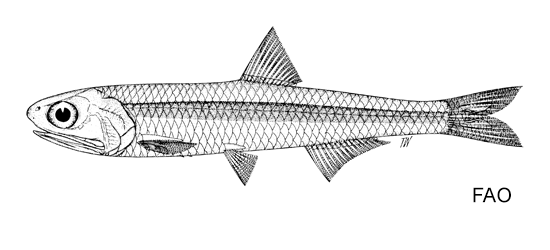| Engraulidae (Anchovies), subfamily: Engraulinae |
| 7.5 cm SL (male/unsexed) |
|
pelagic-neritic; brackish; marine; depth range 0 - 50 m |
| Eastern Central Pacific: endemic to Hawaii, but its use as a baitfish may spread its range. |
|
Dorsal spines (total): 0-0; Anal spines: 0-0; Anal soft rays: 13-15. Most specimens without pre-pelvic scutes, but some with 1 to 5 thin needle-like scutes. Maxilla tip blunt, reaching to front border of pre-operculum, but scarcely projecting beyond second supra-maxilla. Isthmus short, preceded by a small fleshy plate on urohyal between branchial membranes. Anal fin short, its origin behind base of last dorsal fin ray. |
| Epipelagic (Ref. 58302). A schooling species living close inshore and entering bays, inlets, estuaries, canals and even penetrating into fish ponds, thus able to tolerate a wide range of salinities. Feeds mainly on planktonic crustacean larvae. Breeds throughout the year, with a peak in summer, spawning at night (between 2200 and 0200 hours) in bays and estuaries (Ref. 189). |
|
Least Concern (LC); Date assessed: 28 February 2017 Ref. (130435)
|
| harmless |
Source and more info: www.fishbase.org. For personal, classroom, and other internal use only. Not for publication.
